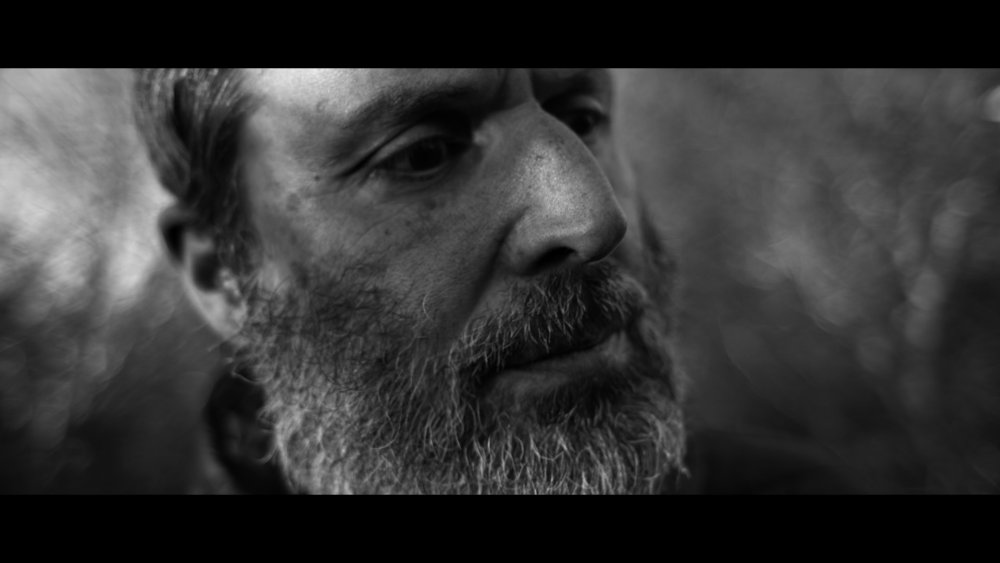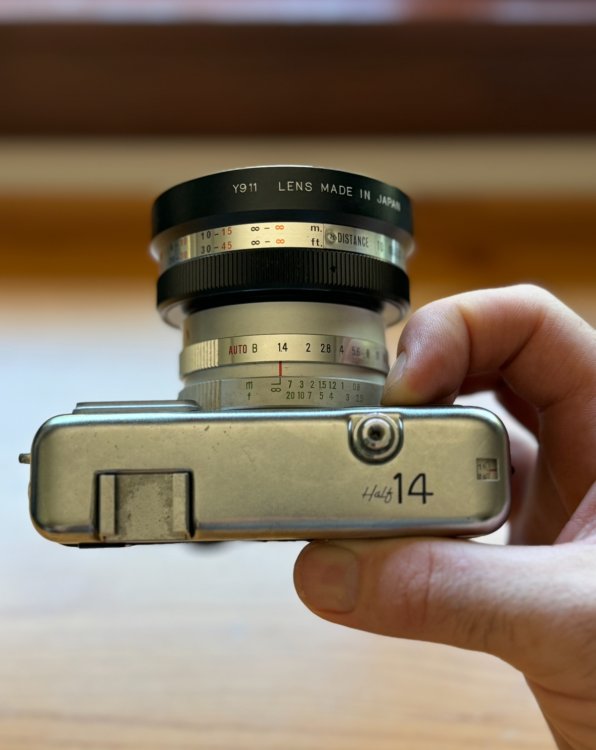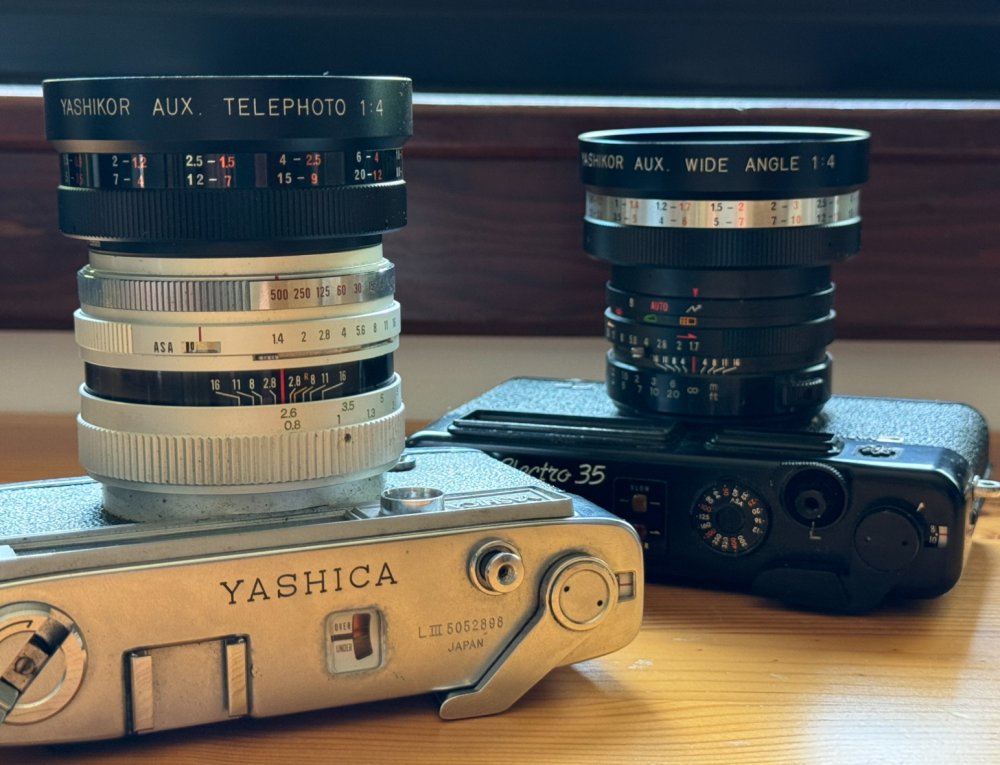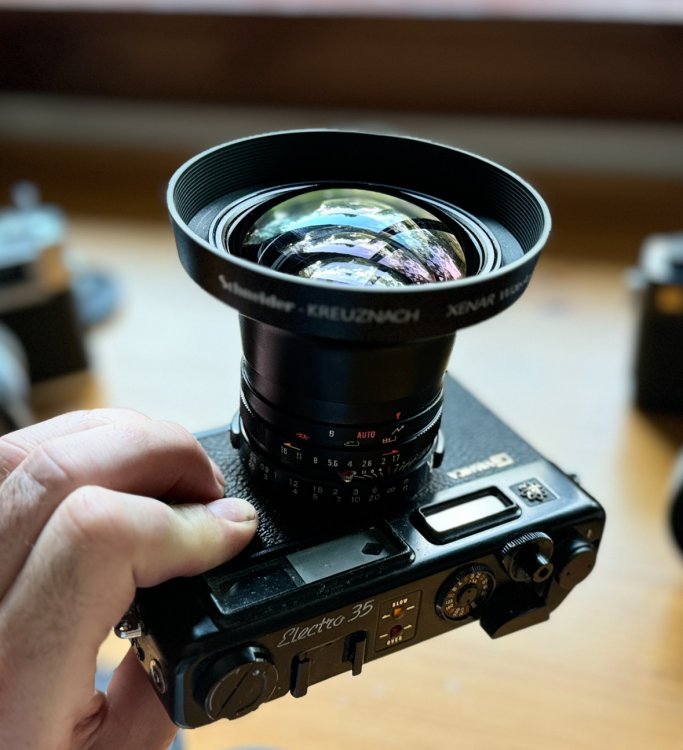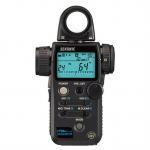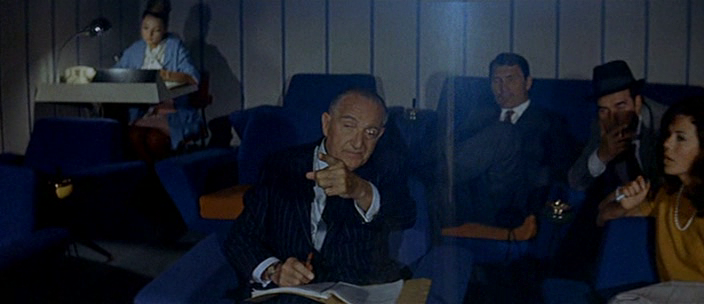Leaderboard
Popular Content
Showing content with the highest reputation on 03/22/2025 in all areas
-
Sorry for the repost but after second thought, I realized that this wasn't shot with the Super Takumar 50mm 1.4, it was actually shot with the Nikon Nikkor 28mm f/2 N.C. non-ai lens. I was using the Tak a lot last spring/summer, so I just assumed that was it, but the close up bothered me so I went back to my notes. Anyway, I didn't want to misrepresent the lens...2 points
-
Fuji often come up with great concepts but miss on their first gen products.. X100, Xpro, XT, GFX etc. The Eterna cine also got lukewarm reception. I still think GFX100RF is a great concept, shrinking the GFX body and bringing the fixed lens X100 rangefinder design to medium format with some really cool ergonomic additions (the aspect ratio / crop front & back dials, the custom front lever). Only real bummer is the lens & IBIS. I could imagine a GFX50RF with a f2.8 lens & IBIS. 6K. Open-gate. Now that would be a smash. I can understand the price point objective of under $5K. Fuji wants to undercut Leica as they should.2 points
-
2 points
-

Panasonic full frame rangefinder style camera
Juank reacted to Andrew Reid for a topic
I need this... It would save Panasonic for me... Full frame, premium rangefinder better than a7C, better than S9, big EVF, Fuji styling and dials, photographic monster that happens to do perfect 6K open gate too with the usual Panasonic features. It would save them in the photography market and get them back on track in a big way. Full frame GX9 please!1 point -
Everyone is talking about how they used the Ronin 4D on the "Adolescence" and how well it did. I bet they only used it in like 4 shots though.1 point
-
Slightly chunkier, better built and with a bit more design flair than the S9. Yep, I’ll buy it. Probably… The S9 is my run & gun video unit for 2025. I don’t much care for it for stills however. The Fuji RF I was hoping might be ‘The One’ and it’s close, but no cigar. A7Rii & C have great sensors and size, but ‘fail’ in various other regards for me. Essentially take the best qualities of the above 3 and mash them up and spit it out as the LUMIX S-RF camera. I wish…1 point
-

Panasonic Lumix S1R Mark II coming soon
Ninpo33 reacted to Andrew Reid for a topic
Has it been improved from unworkable, to crap?1 point -
Fujifilm X Summit Livestream 20/03/25
Ninpo33 reacted to eatstoomuchjam for a topic
I'd still say that in a lot of ways, this is going to be a fantastic travel/vacation camera. If I slow down to think about it, when I travel, the Fujinon 32-64/4 was on my original GFX 100 - and now on my GFX 100 II about 90% of the time. As long as things are sunny, I'm usually shooting between f/5.6 and 11 for landscapes/urban stuff. Shallow DOF is not important in those situations. If you're on a scenic overlook pointing the camera at a valley with some mountains in the distance, shallow DOF is mostly useless (and half the time I just use my phone for this stuff instead of digging my camera out of the bag in the back seat or trunk - which might be changed if the camera is small enough to keep on me). When I change lenses, it's usually for portraits with the 110/2 (usually used wide open) and the 63/2.8 (smaller and a stop faster for use in the evening and for a smaller profile). The more I think about this camera, the more I'm excited for it to hit the used market - especially anticipating that Fuji will update firmware sooner or later to allow cropping in video mode (and hopefully 5.8k full width and 8k 1:1 modes) as well. Are there things I'd miss about swappable lenses? Sure. Would some of them be erased if Fuji release a small teleconverter and wide angle converter? Yes. If they don't, do I have a half dozen of them in a drawer somewhere? Probably. Are any of them any good? Unlikely, but... worth a shot.1 point -
Lenses
John Matthews reacted to mercer for a topic
Speaking of Nikkor non-ai lenses, I have a small set with the updated "c" coating, the 28mm f/2, 50mm 1.4 and the 105mm 2.5. All are in mint condition, but they could use a CLA. Those old non-ai Nikkor lens' focus lubricant dries up pretty good, and although the focus is smooth and holds, it doesn't have the same dampening as older Taks or Minoltas have. Anyway, can anyone recommend a lens tech in the US. I'm in the Philly area, so anywhere in the mid-Atlantic, northeast would work.1 point -
Fuji says it was a compromise between size and price. They had a strict goal to keep the size and thickness around X100 series. In fact they are hoping to apply the X100 "sold out" viral success in an upscale segment. Price had to fit under the $5K mental barrier. So that explains it, wether they achieve commercial success is another story though. I'm guessing the thinking for low light situations is to go with a flash, since the leaf shutter allows super high sync capabilities. I would have loved it if they had included a flash like on X100 series, but again size and price. I can see this camera working great for certain applications. But I can also see it being frustrating at others and the overall IQ is just not what you'd expect from a camera at that price point imo (unless you really like slow wide lenses). If they unlock the aspect ratios and crop factors for video it may make it slightly more interesting as a fun cool hybrid but I still think there are better options in the compact fixed lens universe, including their own X100VI that has IBIS, NDs, flash, 6K, hybrid OVF/EVF, f2 lens.. at a third of the price. The GFX100RF feels like more of a luxury statement camera with mid specs. Probably the most Leica product from Fuji. They could have called it the GFX100BF.1 point
-
Still on doubt actually, if just mere another non-sense ('movies looked better before "color grading" was invented' : D I've only paid attention to the talking marks... LOL ; ) or makes us to think better about that... Not a simple equation as much as film isn't either -- post in the previous century or after, is surely part of it (from the keyboard of someone with editing/post as his primary film background* exactly in the late 90s/turn of the century ; ) while digital is doubtlessly also this: No matter how many LUTs, TikTokers & suchlike with their bloody vertical aspect ratio pop up... Lang protested against snakes & funerals as their proper format to shoot them when 2.35:1 cinemascope arrived despite MOONFLEET had been shot by him, go figure! : P While we can only dream in 2.39:1 ratio but on screen and in B&W or Colour out of there too, one doesn't exclude the other ;- ) The director playing himself on JLG's masterpiece LE MÉPRIS... : D [*] Moreover, currently in charge of a large 16mm/8mm inventory in EU, UK and U.S., as well their variations aka Super 16/Super 8 to be digitally transferred with the resource/use of the most advanced colour grading technology and techniques of today... just for the sake of memories preservation shot on film.1 point
-
Hi Emanuel, nice to meet you and sorry for being so late, I posted this and then just closed everything, only now I'm coming back to this forum. Thank you, yeah I was just looking for work in film industry, I know that many of you here are doing films or documentaries and I hope to meet someone who need my old music or new original music to write. Plus I did some piano covers on youtube (with very bad camera and lights) and I'm passionate about video production even if I understand very little about that. I like video editing and color correction (I used Davinci Resolve for a while), and of course I always loved films... By the way music is my first thing. I'm in Abruzzo, center of Italy, on the opposite side of Rome 🙂1 point
-

Lenses
Ninpo33 reacted to John Matthews for a topic
That's good to hear. We are usually talking about 4k 10bit files in 2025 and they should have that kind of latitude. As for the 57mm f/1.2, I think you could just grey card it and it would be fine. I personally won't be trying to remove the yellowing. For me, that's just part of the charm.1 point -
If anyone is interested, this is a comparison I did of various OM-1 IBIS settings and Panasonic 'Power OIS' lens stabilization. All handheld, all C4K@50p video, using Panasonic 100-300mm f4.0-5.6 II lens at 100mm and 300mm. I was standing still, the camera was handheld, using the EVF, with my left hand underneath the lens and right hand holding the camera body.1 point
-
A most enjoyable watch. Much more engaging that the overly repetitive swill that many US cable outlets are pumping out these days. Distribution should be well within reach, and they should be lucky if you don't charge them too much for the privilege. There is definitely a market beyond your immediate community. I think the key to unlocking it is about perspective. Which of the following is true? - it's a community film about this Hawk Watch - it's a science communication film about conservation told through this Hawk Watch - it's a human interest film about the main guy - it's a social commentary film about volunteer work and the challenges to maintain efforts across generational divides - it's a motivational film about community during a time when loneliness is an epidemic Answer: it's all of these and more. I'm sure you have sound bites that would tell each of these stories directly. Weaving these threads together into a more nuanced view could be a way to get a tighter edit by putting more layers into it rather than cutting run-time out of it. I definitely agree with @mercer that a YT channel could easily be built around this, by providing snippets of the doc, behind the scenes instalments, equipment talk, bird talk, etc etc.1 point
-
Watched the whole thing in one sitting, really remarkable. Really solid acting from everyone involved and the 'one take" episodes were very well done. I almost want to watch again and just focus on the camera the whole time. There were some interesting choices with where to have the various episodes take place and to have to think about the limitations of space and time that come with this style of storytelling. It's normally easy to manipulate these elements in traditional filming and editing so here it's fun to see the creative use of transitions and blocking.1 point
-

Fujifilm X Summit Livestream 20/03/25
BTM_Pix reacted to Andrew Reid for a topic
In case anyone is interested what the Canon 40mm F2.8 pancake stopped down to F4 looks like on the GFX 100 sensor... 102 megapixel RAW https://drive.google.com/file/d/1dhwquD9iiCYouNpwsmlu1-QcmSSNE8VD/view?usp=share_link No crop. No vignetting correction. I think for 5 grand Fuji really should have put a better lens on it. I mean, if an old EF 100 euro one can do this... And it doesn't even have the advantage of a short flange distance. OK it is 5mm less wide... so 35mm equivalent. rather than a 28mm equivalent. But the 28mm F3.1 equivalent. look for 5 grand is a bit... boring? I think we know the reason they didn't go all out on it... A more exciting lens would have stopped people buying the more exotic GFX mount stuff!1 point -
I don't understand whether this is a provocative post or a serious one. Now, I am also somewhat ignorant of the topic but some of the statements seem 'exaggerated' to me to be good. In general, digital has greatly democratised cinema and its art. But every art has its era and its crafts and this constant 'it was better before' is largely pissing me off. It describes good old times that never existed. There were horse carriages and the farrier lobby, then came the railway and goodbye farriers. The truth is that today any artist can produce a film with cinematic quality at home and at a negligible cost. Unless you regret the old Super 8 home movies. Anyway, back to the data. It's hard to talk about resolution as we understand it today in the digital world, but I have my doubts that a good film will not solve 8K, quite the contrary. Here a document for nerds: http://www.tmax100.com/photo/pdf/film.pdf But here there's a video that explains it more simply. Regarding the immediacy of film.... are we talking cinema or home-made Super 8s? Because if you mention Clint Eastwood and Kodak Vision (Vision is cited also in the YT video above) then it's much more complex with intermediate and print stocks: https://en.m.wikipedia.org/wiki/Film_stock Ah and color grading existed on film stock too. It was called color timing: https://en.m.wikipedia.org/wiki/Color_grading Finally, am I saying that digital is better than film stock? NO, they are two different medium.1 point


